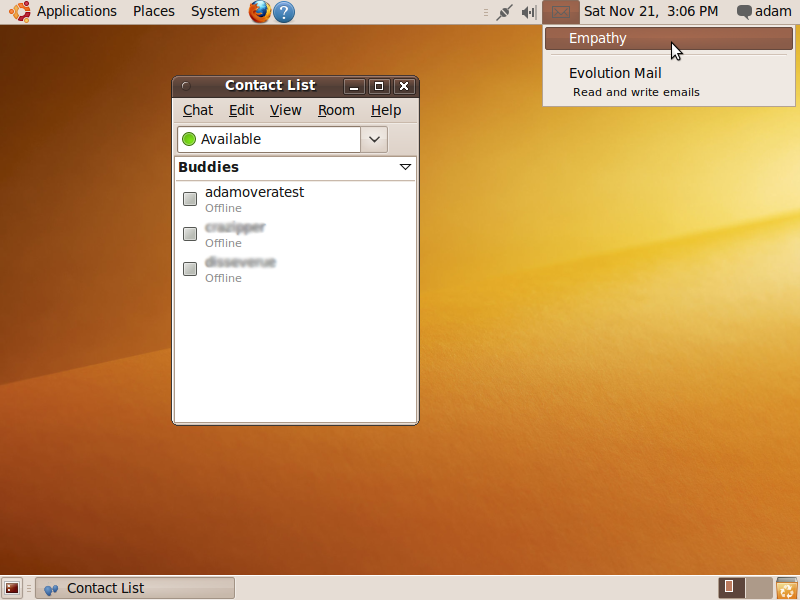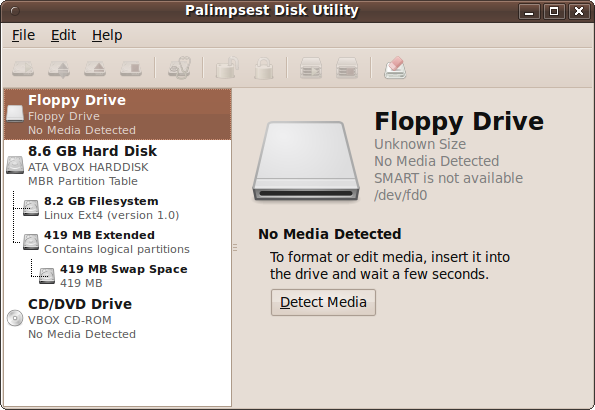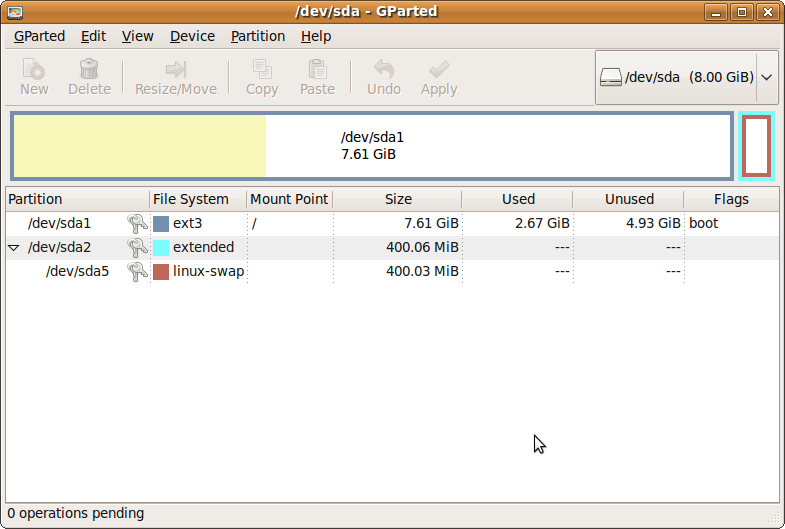Ubuntu 9.10: The Karmic Koala Benchmarked And Reviewed
What's New In 9.10?
Ubuntu 9.10, the “Karmic Koala,” has ushered in more changes to the OS than any other version in recent memory. Some of these changes have been promised (but undelivered) for several releases, while others were relatively recent decisions. On this page, I will go over some of the major additions and replacements for old defaults. The Ubuntu One cloud service and the new Ubuntu Software Center aren't covered here, but have their own pages later on.
Empathy Replaces Pidgin and Ekiga
Probably the most controversial change in Ubuntu 9.10 is the replacement of highly popular, cross-platform, multi-protocol instant messaging client Pidgin with the much less popular and compatible Empathy client. A firestorm of debate has been raging over this topic among developers and users alike ever since the announcement to replace Pidgin was made last year. While Empathy brings tight integration to the desktop, this also means that it is anchored to GNOME. Anyone using KDE, Mac, or Windows will need a different IM client on those installations. Though it should be noted that Empathy also handles VoIP, and therefore replaces Ekiga as well as Pidgin. The opinion polls are about dead even regarding the incorporation of Empathy into Ubuntu and that is where I'll leave it. After all, there are legitimate pros and cons to both sides of the argument.
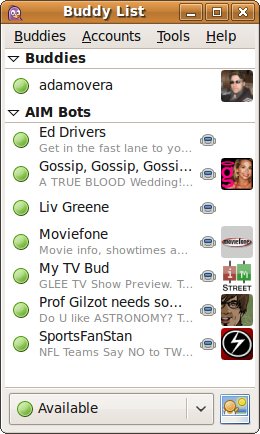
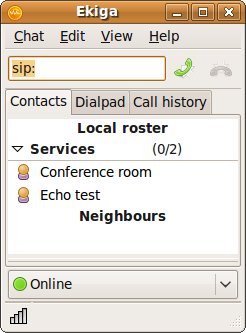
ext4 Replaces ext3
Another major change to this release is the switch from ext3 to ext4 as the default filesystem. The previous release, 9.04, added ext4 as an option during installation, but left ext3 as the default.
There have been reports of system crashes when moving very large amounts of data due to ext4. I have been using ext4 on my primary machine since the release of 9.04 and can verify those reports. I have experienced several instances where I needed to reboot my PC due to a total lockup caused by moving many gigabytes of data from one folder to another. I have also experienced many lockups in 9.10, but none seem to have anything to do with ext4, since none have occurred when moving files. If you plan on upgrading to Ubuntu 9.10 from an earlier version that uses ext3, you will have to keep it, as only fresh installations will be able to use ext4.
Palimpsest Replaces GParted
Get Tom's Hardware's best news and in-depth reviews, straight to your inbox.
A more surprising replacement is that of the default partition editor, GParted, by the newer Palimpsest application. It should be noted that most users won't actually see the name “Palimpsest” until the app is started, since it is simply listed as Disk Utility in the System/Administration menu.
One upshot to Palimpsest is the nice graphical listing of devices in the left-hand pane. Partitions within a device are listed in file-tree style under the main device. This is a definite improvement for new users over GParted's drop-down menu of /dev listings of devices, which has made many a newbie accidentally erase their hard drive. I've long said that GParted is much too complicated for simple jobs like erasing a USB flash drive.
Palimpsest actually has the options to please advanced users as well. I found Palimpsest to have even more filesystem options than GParted, though the option to resize partitions is sorely missed. Even without the ability to resize partitions, Palimpsest is a good call, since GParted wasn't actually included in Ubuntu, but available as a download in the repos.
Upstart
Upstart is a new addition that handles the applets and services that load when you start your machine, suspend, or resume. Upstart does not control anything during the first part of the boot process, but speeds up the last part of boot-up--that awkward moment when the desktop is visible, but still unusable (this means things like the network manager, battery indicator, volume control, and the new Ubuntu One syncing service). I've found that Upstart does its job perfectly. There is no more “unusable” desktop with the Karmic Koala. It goes straight from login to splash screen to a fully usable desktop.
Current page: What's New In 9.10?
Prev Page Test Systems And, Uh Oh, Problems Already Next Page Software Updates And Upgrades-
burnley14 The new Upstart feature sounds terrific. Windows needs to take notes, I hate the awkward limbo of seeing your desktop but not being able to do anything.Reply -
Hi,Reply
I was a bit surprised to read your slaughter of Ubuntu 9.10, because that does not reflect my experience with it. My first thoughts when reading this were related to the (possible lack of) integrity and technical skills of the author (sorry about that). Then I remembered that I experience a few minor issues when upgrading from 9.04 to 9.10 as well and that I read about people which were unhappy with it. However, none of these would IMHO deserve the label "epic fail".
Spending four days for installing 9.10 and reinstalling 9.04 seems like way more time than you should need. I upgraded my computers running Ubunutu in less than an hour. I have not tried a clean install but it would surprise me that this would be any harder. My parents have also been using Ubuntu for more than a year now without any complaints (this includes an upgrade to 9.10). Maybe I have been lucky?
I have been using Ubuntu at work and at home for the last 3-4 years and I am pretty happy with it. I am also happy with the fact that you (Tomshardware) have been writing about Linux a bit more frequently. Keep it up, but don't be so harsh :) -
jj463rd I tried it on one PC.Had constant problems with the Mouse not working,system locking up etc.I went back to installing rock solid older 8.04 LTS on it which worked without problems (except for the time consuming (about) 450 updates).Reply
-
rsmith13 I also got the Kernel problem error messages after installing Xubuntu 9.10 on an AMD 64 system. They went away after doing an update. I now have Xubuntu 9.10 on 5 single and dual core AMD 64 systems. with no problems.Reply
Do the update! -
cyberkuberiah hardware driver support from the hardware makers themselves is lacking , i installed ubuntu , could not connect to belkin wifi even after using the prop drivers , and then uninstalled it . patience over .Reply -
haplo602 nice article ... I mostly skimmed through it :-) anyway can you include a windows 7/vista benchmark base for the same hardware ?Reply
I know some of the test will be irrelevant (like the timed installation) but most should work. -
DGriffin I had 9.04 and upgraded to 9.10 with out any problems at all... I have a AMD 64 processor and had no problems with the 64bit vir... ..idk maybe I got lucky, but I sorta doubt it..Reply -
MaxTesla The screensaver starts after 5 min so when you install Ubuntu the screen saver will start and the screen will go black you need to move your mouse too see the instalation again, this could of course be mistaken for a crashReply -
MaxTesla The screen saver starts after 5 min so when you install Ubuntu the screen saver will start and the screen will go black you need to move your mouse too see the installation again, this could of course be mistaken for a crashReply -
I tried installing Ubuntu 9.10 via Wubi, immediately after rebooting from Windows and seeing the Ubuntu bootscreen it gave me a black screen, with my monitor reporting that there was no signal. Back to Windows I go, I suppose. :/Reply
